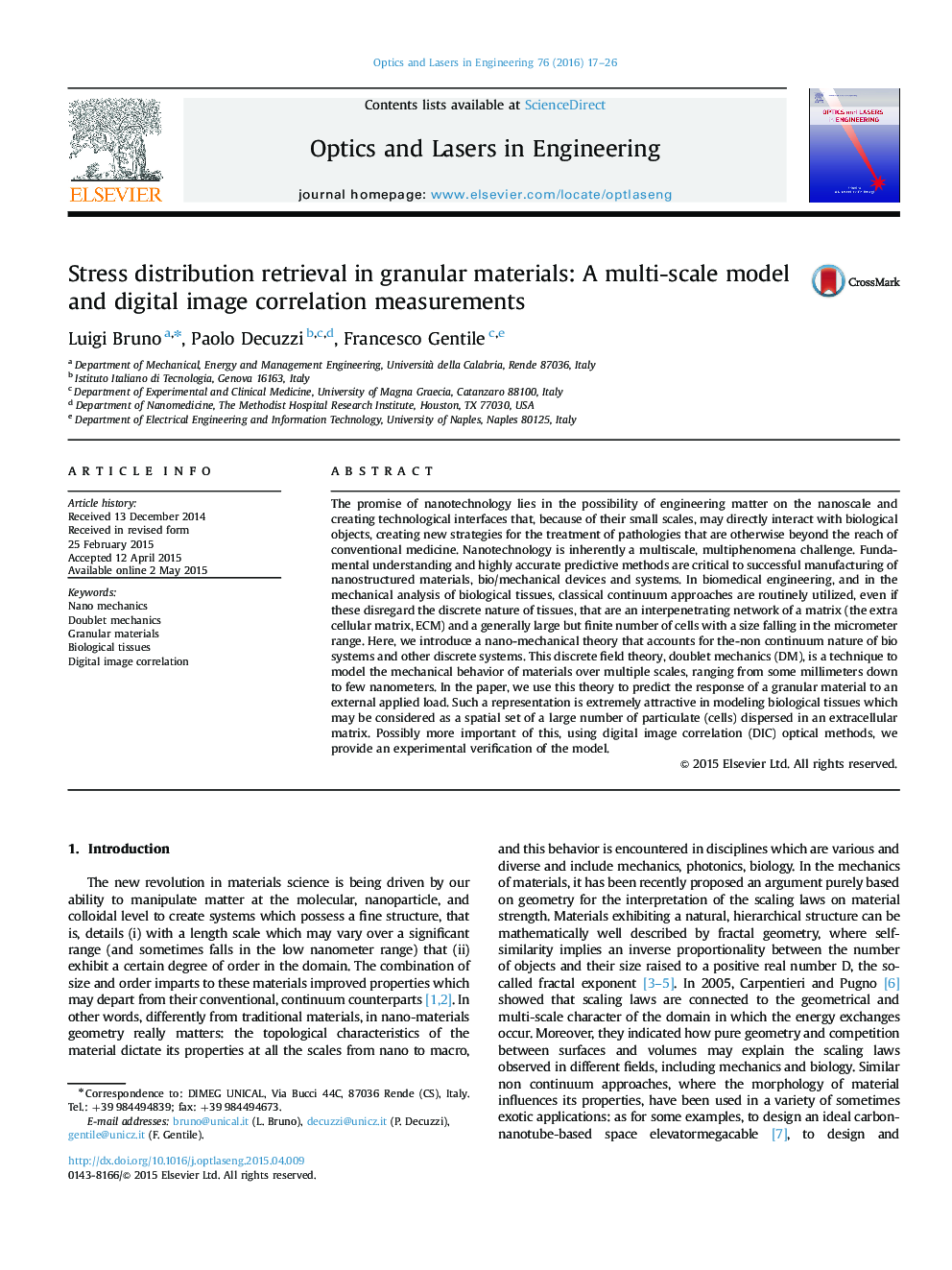| Article ID | Journal | Published Year | Pages | File Type |
|---|---|---|---|---|
| 735512 | Optics and Lasers in Engineering | 2016 | 10 Pages |
•Theoretical model based on the doublet mechanics for predicting stresses and deformations in granular materials.•Specimen with periodic structure made by optical lithography.•Displacements measured by digital image correlation technique applied on images acquired by optical reflection microscope.
The promise of nanotechnology lies in the possibility of engineering matter on the nanoscale and creating technological interfaces that, because of their small scales, may directly interact with biological objects, creating new strategies for the treatment of pathologies that are otherwise beyond the reach of conventional medicine. Nanotechnology is inherently a multiscale, multiphenomena challenge. Fundamental understanding and highly accurate predictive methods are critical to successful manufacturing of nanostructured materials, bio/mechanical devices and systems. In biomedical engineering, and in the mechanical analysis of biological tissues, classical continuum approaches are routinely utilized, even if these disregard the discrete nature of tissues, that are an interpenetrating network of a matrix (the extra cellular matrix, ECM) and a generally large but finite number of cells with a size falling in the micrometer range. Here, we introduce a nano-mechanical theory that accounts for the-non continuum nature of bio systems and other discrete systems. This discrete field theory, doublet mechanics (DM), is a technique to model the mechanical behavior of materials over multiple scales, ranging from some millimeters down to few nanometers. In the paper, we use this theory to predict the response of a granular material to an external applied load. Such a representation is extremely attractive in modeling biological tissues which may be considered as a spatial set of a large number of particulate (cells) dispersed in an extracellular matrix. Possibly more important of this, using digital image correlation (DIC) optical methods, we provide an experimental verification of the model.
